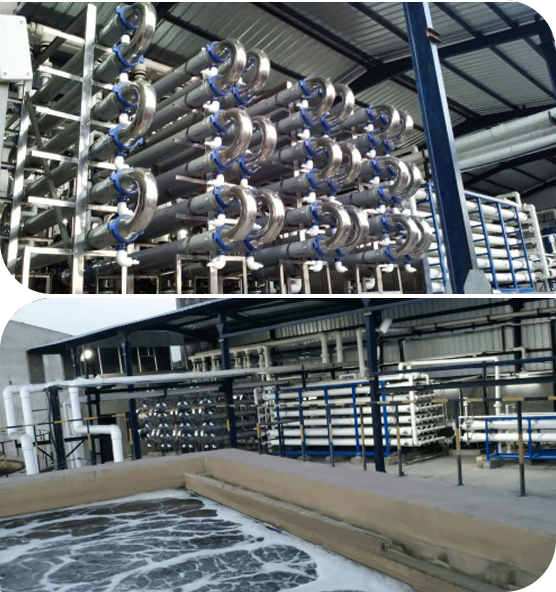
Waterman Engineers Australia is amongst the main manufacturers of Zero Liquid Discharge program. A ZLD program is often a cure system which happens to be used to eliminate many of the liquid squander from a method. The objective of ZLD h2o procedure is to lessen wastewater economically and make potable water that's match for normal use. Zero discharge process is a sophisticated therapy method that comprises ultrafiltration, reverse osmosis, evaporation and fractional electro deionization. And we have been a properly-recognized provider of ZLD techniques.
In many Industries, for instance electrical power, oil & fuel, chemical substances, mining and Other people, a great deal of wastewater is generated that needs to be managed. Conventionally, this discharge of wastewater is done through a plant outfall to a floor h2o entire body like an evaporation pond, or occasionally deep effectively injected. These tactics bring about lots of environmental problems by the public in lots of locations of the entire world, as drinking water is a scarce supply and its administration need to be monitored. These considerations have resulted from the institution of ZLD procedures by numerous industries to minimize their environmental footprint and enrich sustainability. And, Waterman Engineers Australia are best ZLD suppliers you could find for This technique.
Attributes OF ZERO LIQUID DISCHARGE SYSTEM
The properties of a Zero Liquid Discharge method may vary depending upon the specific style and technological innovation applied. On the other hand, some popular Attributes of ZLD systems include:
H2o Conservation: One of the first targets of ZLD devices will be to conserve water by reducing the discharge of liquid squander to the surroundings.
Large Water Purity: ZLD techniques are created to create high-high-quality drinking water that is certainly free of charge from impurities and contaminants, which makes them suited to use in lots of industrial procedures.
Versatility: ZLD systems will often be made to accommodate a wide selection of enter liquid streams, which makes them functional and ideal for use in various industries.
Innovative Wastewater Therapy: Zero liquid discharge units use Superior wastewater procedure ways to remove impurities and contaminants through the effluent, producing substantial-quality drinking water.
Squander Reduction: ZLD systems aid cut down waste by lowering the quantity of liquid squander that needs to be disposed of and by generating a concentrated, stable squander material which can be safely and securely disposed of.
Energy Efficiency: ZLD techniques is often energy-intensive as a result of substantial Electrical power requirements of evaporation along with other wastewater treatment method procedures. On the other hand, innovations in technology are making Zero liquid discharge methods much more Vitality-effective and cost-efficient.
Waterman Engineers Australia manufactures Zero Liquid Discharge (ZLD) methods made to eliminate all liquid squander, aiming to generate potable drinking water and lessen environmental affect. Their ZLD techniques usually consist of ultrafiltration, reverse osmosis, evaporation, and fractional electro deionization. Key systems utilised are Falling Movie Brine Concentrators, Pressured Circulation Crystallizer, and Other people, with a two-action technique of pre-concentration and evaporation/crystallization to Get well and reuse water. These units are adaptable to unique industries, emphasizing water conservation, superior drinking water purity, squander reduction, and Strength efficiency. Complex specifications are diversified and customizable, taking into consideration elements like drinking water source, circulation price, and feed drinking water quality.
The need for Zero Liquid Discharge (ZLD) units arises with the necessity to handle environmental fears linked to h2o scarcity and air pollution. In industries like electrical power, oil & fuel, and mining, vast amounts of wastewater are produced. Traditionally, this wastewater is discharged into bodies of water, triggering air pollution and depleting clean water assets. ZLD units aim to minimize these impacts by dealing with and recycling wastewater in the economic process, thereby conserving water, lowering squander, and advertising and marketing sustainability.
When considering the technical specifications of a Zero Liquid Discharge (ZLD) method, crucial factors to center on involve the h2o resource it will eventually address, the system's flow rate, the standard of feed h2o, the phases of cure included, the recovery price of water, methods for focus disposal, elements of development, working situations, and method automation Zld System Manufacturer Zero Liquid Discharge System and Manage. These factors make sure the technique's usefulness, durability, and performance in dealing with and recycling industrial wastewater.
Zero Liquid Discharge (ZLD) plants present Positive aspects for example water conservation, squander reduction, and pollution avoidance, contributing to environmental sustainability. They're relevant in industries like electrical power technology, oil and gasoline, chemicals, and mining, wherever they help in running industrial wastewater properly, decreasing the ecological footprint, and complying with demanding environmental rules. These systems are critical in locations experiencing water scarcity and for industries aiming to boost their sustainability and operational performance.
FAQs for any Zero Liquid Discharge (ZLD) procedure usually handle its operational principles, Value-effectiveness, upkeep prerequisites, environmental influence, applicability across several industries, and regulatory compliance. These concerns support buyers comprehend the technique's Gains, technical needs, and suitability for their distinct wastewater administration requires.
one. Zero Liquid Discharge (ZLD) is really a wastewater remedy approach meant to eliminate all liquid squander.
two. The system's components are influenced by the precise industrial process, wastewater composition, and regulatory specifications.
3. Effluent therapy plants remove pollutants from textile effluents to prevent environmental contamination.
four. Pros include h2o conservation, air pollution reduction, and regulatory compliance.
5. The aim is to minimize environmental impact by recycling h2o and cutting down squander.
6-nine. Effluent cure vegetation are stages in wastewater treatment: primary (Actual physical separation), secondary (biological therapy), and tertiary (advanced procedure).
ten. Unit functions incorporate filtration, sedimentation, biological procedure, and disinfection.
11. Restricting parameters are variables that influence the therapy's performance, like pH and contaminant concentration.
twelve. Design and style concerns involve stream price, effluent composition, and wished-for good quality of handled drinking water.